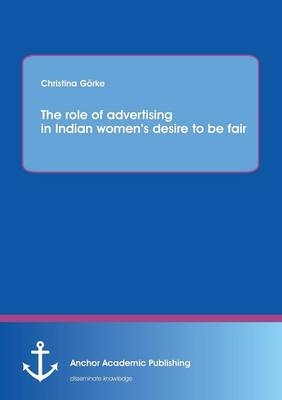
The role of advertising in Indian women¿s desire to be fair
Anchor Academic Publishing (Verlag)
978-3-95489-324-9 (ISBN)
Text Sample:
Chapter 3.3, The Questionnaire, Sampling and Procedure:
3.3.1, The Questionnaire:
The questionnaire contained 13 questions of which 10 were closed- and 3 were open-ended. The first question contained two statements to which women were supposed to indicate their level of agreement. Results were expected to demonstrate respondents feelings about the importance of fair skin given by Indian society. Subsequently, question 2 asked whether or not they tried to lighten their skin. Additionally, in question 3, women were required to indicate which products they used and within which time period. These options were added in order to find out whether chemical or herbal products were used and to determine how hard respondents were trying to obtain a lighter skin tone. Subsequently, in question 4 women were questioned about their satisfaction with the products used in order to collect data about women s attitudes towards them and eventual adverse effects of the products. Question 4 and 5 went hand in hand for the same purpose; with question 5 being open-ended and leaving more room for interviewees explanations. The sixth question had the function of examining women s reasons for lightening their skin. In question 7, women are demanded to determine their attractiveness which, in correlation to skin-lightening behaviour could explore, whether or not women lightening their skin are less satisfied with their appearance. The current skin tone had to be indicated in question 8. This question was placed due to the possibility that a very fair woman is less likely to use fairness products than a dark brown one. Thus, this answer served as a partial explanation for women s desire to lighten their skin. Question 9 was asked to investigate whether or not skin-lightening behaviour is related to the aspirated career, for instance, whether women aiming at a model career are more likely to lighten their skin than women who are reaching for a career as software engineer. The following three questions 10, 11 and 12 were supposed to determine respondents television viewing behaviour and the frequency of women s magazine reading. The open-ended question 13 provided the chance for women to elaborately explain their view about the role of skin colour in India and to add any comment. Whereas previous open questions did not provide extensive space, this question did. Question 13 was an extremely useful option to obtain qualitative data about women s attitudes towards skin colour in India.
3.3.2 Sampling:
The sample consisted of 153 Indian women who fulfilled the following two conditions. Firstly, the current place of living had to be India and secondly, the age of the participant had to be at least 17 and less than 30 years. The first condition was necessary, due to the nature of the research which required women who were exposed to Indian television and Indian women s magazines. The second condition was appropriate since the project examined skin-lightening behaviour of young women. As previously explained in my Background , fair skin becomes especially important when it comes to marriage. Therefore, women were selected who were likely to get prepared for marriage or who have recently got married. At the age of 17, most Indian women finish school and go for secondary education or work.
100 questionnaires were distributed in class-rooms among undergraduate students and another 115 questionnaires were sent through Orkut , a network of Google. 100% of the questionnaires which were distributed in class-rooms were completed and returned. However, only 46.1% of the questionnaires sent via Orkut were mailed back to me.
| Erscheint lt. Verlag | 16.10.2014 |
|---|---|
| Sprache | englisch |
| Maße | 155 x 220 mm |
| Gewicht | 128 g |
| Themenwelt | Sozialwissenschaften ► Soziologie ► Allgemeine Soziologie |
| ISBN-10 | 3-95489-324-X / 395489324X |
| ISBN-13 | 978-3-95489-324-9 / 9783954893249 |
| Zustand | Neuware |
| Haben Sie eine Frage zum Produkt? |
aus dem Bereich


